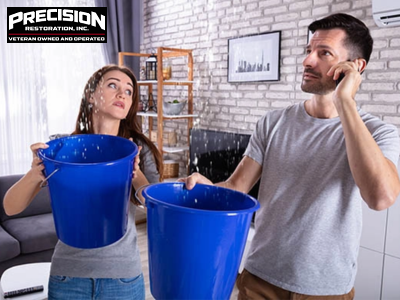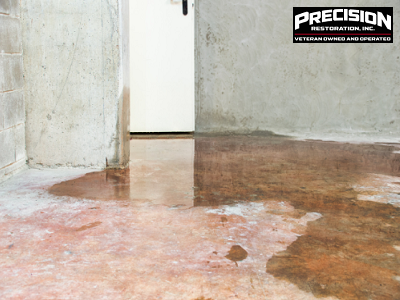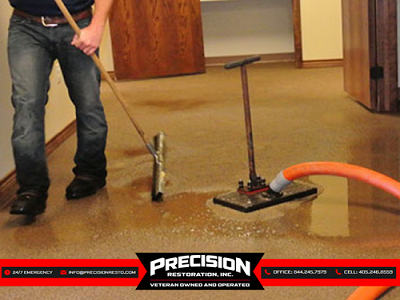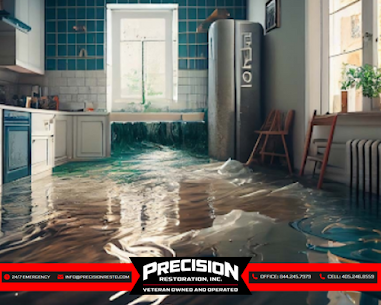Water damage is one of those insidious issues that can silently wreak havoc on your home. Often, it’s not until significant damage has occurred that homeowners become aware of the problem. However, by being vigilant and knowing what signs to look for, you can catch water damage early and prevent costly repairs. In this comprehensive guide, we’ll explore how to identify hidden water damage in your home and what steps you can take for effective water damage restoration.
Understanding Water Damage

Before diving into detection methods, it’s crucial to understand what water damage is and how it can affect your home. Water damage occurs when excess water intrudes into your home and causes deterioration of materials and structural components. It can be the result of various sources, including:
- Leaking Pipes: Over time, pipes can corrode or develop leaks due to pressure
temperature changes, or physical damage.
- Roof Leaks: Damaged shingles, flashing issues, or clogged gutters can lead to water seepage into your home.
- Poor Drainage: Inadequate drainage around your home can cause water to pool and seep into your foundation.
- Appliance Malfunctions: Washing machines, dishwashers, and other appliances can malfunction and leak.
- Flooding: Heavy rain or natural disasters can result in significant water intrusion.
Signs of Hidden Water Damage
Recognizing the signs of hidden water damage is key to addressing the issue before it escalates. Here are some subtle indicators that you might have a water problem in your home:
Discolored or Stained Walls and Ceilings
One of the most obvious signs of water damage is discoloration or stains on your walls and ceilings. These stains often appear as yellow or brown spots, indicating that water has seeped through the surface. Keep an eye out for any irregular discoloration, particularly in areas that are prone to moisture.
Peeling or Bubbling Paint and Wallpaper
Water damage can cause paint and wallpaper to peel or bubble. When moisture seeps behind these surfaces, it disrupts the adhesive properties, causing them to lose their grip. If you notice these issues, it’s a red flag that water is affecting the underlying material.
Warped or Buckled Flooring
Water damage can also manifest in your flooring. Wood floors might start to warp, buckle, or become uneven due to prolonged exposure to moisture. Similarly, vinyl and laminate flooring can swell or develop bubbles when water gets underneath.
Musty Odors
A persistent musty smell in your home is often a sign of mold growth, which usually results from hidden water damage. Mold thrives in damp environments, so if you notice a musty odor, it’s essential to investigate further for possible moisture sources.
Increased Utility Bills
Unexplained increases in your water bill can indicate a hidden leak. If your bill spikes without a corresponding increase in water usage, a leak might be the culprit. Investigate your water lines and appliances to determine if they’re functioning correctly.
Mold Growth
Mold can appear as black, green, or white spots on walls, ceilings, or other surfaces. While mold can sometimes be visible, it can also grow in hidden spaces like behind walls or under floors. Regularly check for any signs of mold and address them promptly.
Damaged or Rotting Wood
Wooden components of your home, such as beams, floors, or cabinetry, can show signs of water damage if they become soft, spongy, or discolored. Rotting wood often indicates prolonged exposure to moisture and may require replacement.
Locating Hidden Water Damage
Once you’ve identified potential signs of water damage, the next step is to locate the source. Here are some effective methods for pinpointing hidden water damage:
Inspect Your Home’s Exterior
Start by examining the exterior of your home. Look for signs of damage to your roof, gutters, and siding. Ensure that gutters are clear and functioning correctly to prevent water from overflowing and causing damage.
Check for Leaks in Plumbing
Inspect your plumbing system for leaks. This includes checking under sinks, around toilets, and near appliances like dishwashers and washing machines. Look for any puddles, corrosion, or mold growth around pipes.
Use a Moisture Meter
A moisture meter is a handy tool for detecting hidden moisture within walls, floors, and ceilings. These devices measure the moisture content of various materials and can help you identify areas with elevated moisture levels.
Conduct a Thermal Imaging Scan
Thermal imaging cameras can detect temperature differences within your walls and ceilings. These differences can indicate areas of moisture accumulation. While this method may require professional assistance, it’s highly effective for identifying hidden water damage.
Inspect Attics and Basements
Attics and basements are common areas for water damage due to their proximity to roofing and ground moisture. Check these areas for signs of water infiltration, such as stains, mold, or rotting wood.
Monitor for Structural Changes
Keep an eye out for any structural changes in your home, such as sagging ceilings or warped walls. These changes can indicate underlying water damage affecting the structural integrity of your home.
Essential Steps for Effective Water Damage Restoration
Water damage restoration is crucial for maintaining the integrity of your home. Start by stopping the source of the water to prevent further damage. Next, remove any standing water using pumps or wet vacuums to minimize exposure to harmful contaminants. Thoroughly dry the affected areas with fans and dehumidifiers to prevent mold growth. Clean and sanitize all surfaces to remove any residual bacteria or pollutants. Once everything is dry, inspect and repair damaged materials, including drywall, flooring, and insulation. Finally, monitor the area for any signs of recurring moisture or mold. By following these steps, you ensure a comprehensive restoration process that protects your home and health.
How to Handle Water Damage Restoration Like a Pro
Handling water damage restoration efficiently requires a methodical approach. Begin by assessing the situation and identifying the source of the water intrusion. Immediately address and repair any leaks or issues to stop further damage. Remove excess water with appropriate tools, such as sump pumps or wet vacuums, to prevent mold and structural damage. Use industrial fans and dehumidifiers to thoroughly dry out the affected areas.

Clean and sanitize all surfaces, paying attention to potential contamination. Repair or replace damaged materials, ensuring proper ventilation and sealing. Lastly, consider consulting a professional for a thorough inspection to confirm that all issues have been resolved. Proper handling ensures effective restoration and long-term protection.
Top Strategies for Water Damage Restoration in Your Home
When tackling water damage restoration, adopting effective strategies is key to a successful outcome. Begin by promptly addressing the source of the water, whether it’s a burst pipe or roof leak, to halt further damage. Remove standing water with pumps or vacuums and focus on drying out the area using high-powered fans and dehumidifiers. Clean and disinfect affected surfaces to prevent mold growth and ensure a sanitary environment. Assess and repair structural damage, such as warped flooring or compromised drywall, to restore your home’s integrity. Lastly, implement preventive measures, such as improved drainage and regular inspections, to safeguard against future water damage. These strategies will help you manage and restore your home efficiently.
Conclusion
Identifying hidden water damage in your home is crucial to preventing extensive and costly repairs. By keeping an eye out for subtle signs such as mold growth, unusual odors, and warped surfaces, you can address potential issues before they escalate. Regular inspections and maintaining a vigilant approach to home upkeep are key strategies in managing water damage effectively. Remember, early detection not only saves you money but also helps preserve the structural integrity of your home.
If you suspect water damage or want a professional evaluation, Precision Restoration, Inc. in Oklahoma City is here to help. Our team of experts is dedicated to providing thorough inspections and reliable solutions to safeguard your property. Don’t wait for the damage to worsen—reach out to us for comprehensive support and peace of mind.



